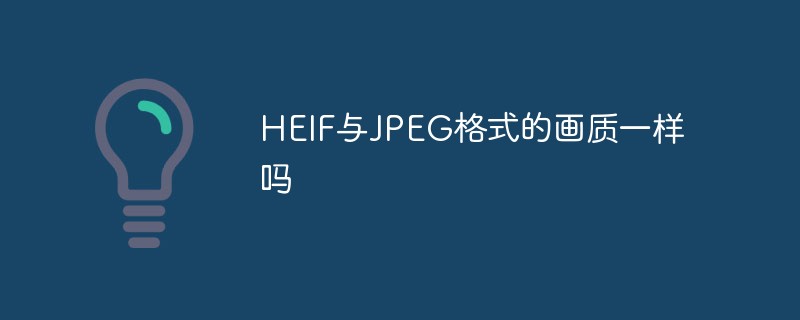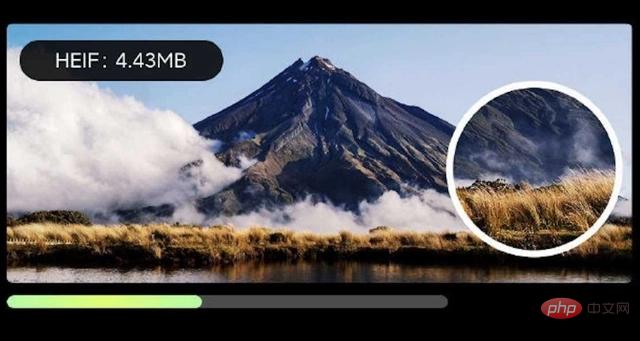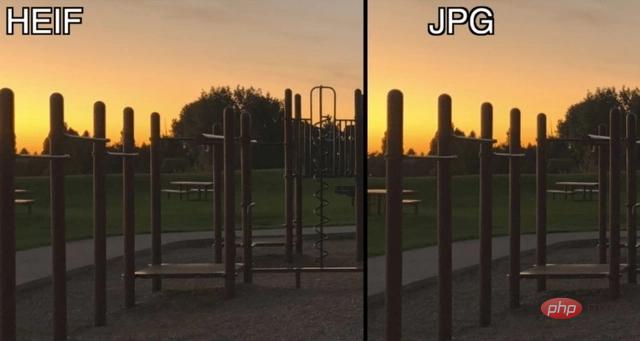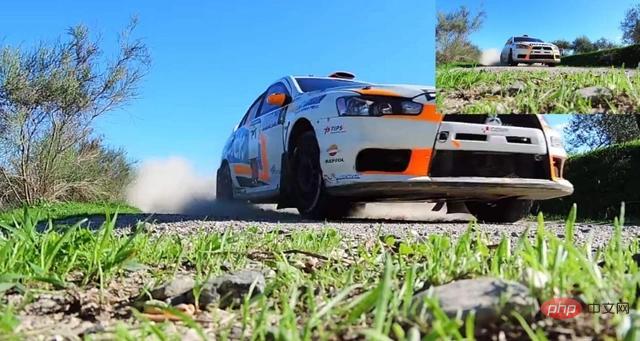Home >Common Problem >Are the image quality of HEIF and JPEG formats the same?
Are the image quality of HEIF and JPEG formats the same?
- 青灯夜游Original
- 2023-03-17 18:17:5411565browse
It’s different, the image quality in HEIF format is better. HEIC is a high-fidelity compression format that will reduce the disk or memory space occupied by images while maintaining image quality; while JPEG is a lossy image format, so the same image taken with HEIC will be smaller, but the HEIC image quality will be better. As an encapsulation format, HEIF can hold much more things than JPEG; it can not only store static images and EXIF information metadata, but also animations, image sequences, and even videos, audios, etc. The types of data stored must be Much richer.

The operating environment of this tutorial: Windows 7 system, Dell G3 computer.
HEIC is a high-fidelity compression format that will reduce the disk or memory space occupied by images while ensuring image quality. JPG has lossy image quality and does not compress the image size very much, so the same image taken with HEIC is smaller, but the HEIC image quality is better. HEIF supports not only transparency but also image color up to 16 bits. Therefore it is more suitable for editing than JPG, which only supports 8-bit color.

HEIF was developed by MPEG. It is a container format for single pictures and picture sequences, encapsulating the three sub-formats of AVCI, HEIC, and AVIF. The HEIF format can store multiple time-related or time-predicted pictures (such as burst photos, Cinemagraph (a combination of dynamic photography and still pictures) animations), as well as their attributes and thumbnails. To exploit spatiotemporal similarities between images, different prediction options can be used.
HEIF is an open image file format developed by the well-known imaging organization MPEG. Different from JPEG, HEIF, as a packaging format, can hold much more things than JPEG. It can not only store static images and EXIF information metadata, but also store animations, image sequences, and even videos, audios, etc. The types of data stored are much richer.

JPEG is the most commonly used and supported lossy image format, first developed by ITU-T and ISO/IEC in 1992. JPEG's low complexity and longevity are impressive. The following are the several levels given by JPEG as criteria for measuring the compression encoding effect for images with moderately complex pictures at 8 bits/pixel: 0.25 bits/pixel ~ 0.5 bits/pixel; medium ~ good, enough to meet some applications. 0.5 bits/pixel ~ 0.75 bits/pixel; good ~ very good, enough for many applications. 0.75 bits/pixel ~ 1.5 bits/pixel; excellent, enough for most applications.
Although the algorithm of JPG has been improving, it is still essentially a static bitmap storage format. However, it has gradually become unable to cope with increasingly advanced shooting and display equipment, and the development of 8K UHD video encoding has brought about Higher ceiling. HEVC images, like videos, support up to 16-bit color depth storage, and can better and seamlessly cooperate with the application of new technologies such as HDR images and wide color gamut.

Although HEIF supports up to 16bit color depth and HDR high dynamic range, ordinary devices, such as mobile phones, still generally jump repeatedly between 6bit and 10bit. iPhone shooting The color of the photo without processing is very bleak when viewed on other systems, which is an interesting special case.

Expand knowledge:
Clarity refers to the clarity of each detailed shadow pattern and its boundary on the image. Color balance is used to control the color distribution of the image so that the overall image achieves color balance. When this command adjusts the color of an image, it is based on the principle of complementary colors. To reduce a certain color, increase the complementary color of that color.
For more related knowledge, please visit the FAQ column!
The above is the detailed content of Are the image quality of HEIF and JPEG formats the same?. For more information, please follow other related articles on the PHP Chinese website!

